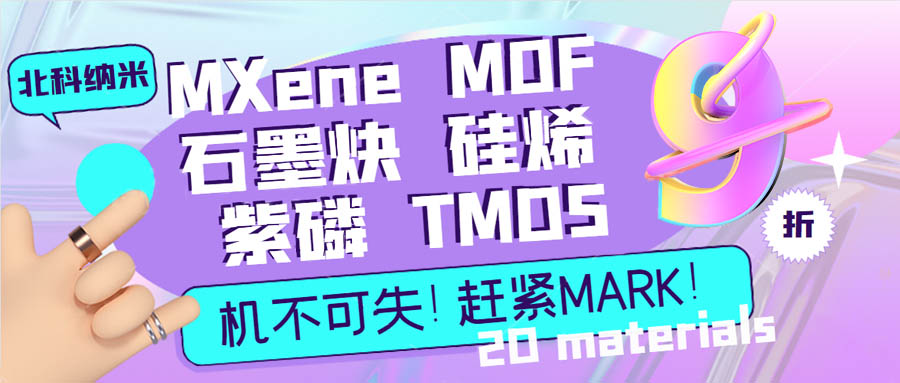ESM: MXene low temperature pseudocapacitance
QQ Academic Group: 1092348845
Detailed

MXene is a two-dimensional star material that is even hotter than graphene. As an advanced MXene manufacturer, North Konami offers special offers, 10% off mxene and other materials, and North Konami launches new mesoporous material products with more preferential prices , waiting for you to spike!


In recent years, supercapacitors have received a lot of attention due to their higher power density and longer lifetime (compared to lithium-ion batteries). At present, most of the research on energy storage devices focuses on the improvement of performance at room temperature, but neglects the severe performance degradation at low temperature. In fact, many energy storage devices have to work under the condition that the ambient temperature is lower than -10℃, especially some sensors used in winter. Some extreme conditions even require the energy storage devices to work at temperatures below -40 °C, so it is very important to keep the energy storage devices in good performance at low outdoor temperatures.
Several recent works have reported that the low-temperature performance of pseudocapacitors can be effectively improved by reducing particle size, increasing ion-accessible surface area, and minimizing solid-state diffusion limitations. Therefore, if the particle size is sufficiently small (as in two-dot and monolayer two-dimensional (2D) materials), redox reactions can occur only on the surface of the active material. Recently, 2D transition metal carbides or nitrides (MXenes) have received extensive attention in the field of electrochemical energy storage due to their high electronic conductivity and volumetric capacity. Although MXene-based supercapacitors can combine high specific capacity and rate capability, these properties have not been explored at low temperature.

Recently, Professor Ding Jianning of Jiangsu University and Professor Yury Gogotsi of Drexel University in the United States published a research paper titled: Low-Temperature Pseudocapacitive Energy Storage in Ti3C2Tx MXene in the international high-level academic journal Energy Storage Materials, exploring the low temperature of Ti3C2TxMXene electrode. performance. In order to avoid the use of antifreeze that may have adverse effects, a high concentration of sulfuric acid with a freezing point of about -70 °C was used as the electrolyte to explore.


Figure 1. Preparation process of MXene films.

Figure 2. Micromorphological characterization and XRD pattern of Ti3C2TxMXene.

Figure 3. Electrochemical performance test of Ti3C2TxMXene film.

Figure 4. Effect of concentration on freezing point of sulfuric acid solution; conductivity and viscosity of 40 wt% sulfuric acid solution at different temperatures.

Figure 5. Electrochemical performance tests of Ti3C2TxMXene films at different temperatures.

In this paper, flexible Ti3C2TxMXene films were tested as pseudocapacitive materials in 40 wt. % sulfuric acid electrolyte at temperatures ranging from 20 to -60 °C. By pre-intercalating water molecules in the Ti3C2Tx membrane electrode, 2D channels for fast ion transport are formed between the MXene layers. This structure can facilitate the transport of ions and facilitate the use of MXene surfaces. Benefiting from the redox capacity of 2D Ti3C2Tx, the ion-accessible electrode structure, and the high conductivity of the proton electrolyte, high capacity, high rate performance, and long cycle life over an extended temperature range can be achieved at -50 °C Under the scanning rate of 5 mV s-1, it can have higher mass specific capacity (88 mAh g-1) and volume specific capacity (304 mAh cm-3), which is very good with the results tested at 20 °C. near. In addition, the capacity loss at ultra-low temperature is even lower than that at 20°C, with a capacity loss of only 7% after 20,000 cycles at -60°C.


- Previous:
- Next: MXene breakthrough: Na


 mxene academic
mxene academic
